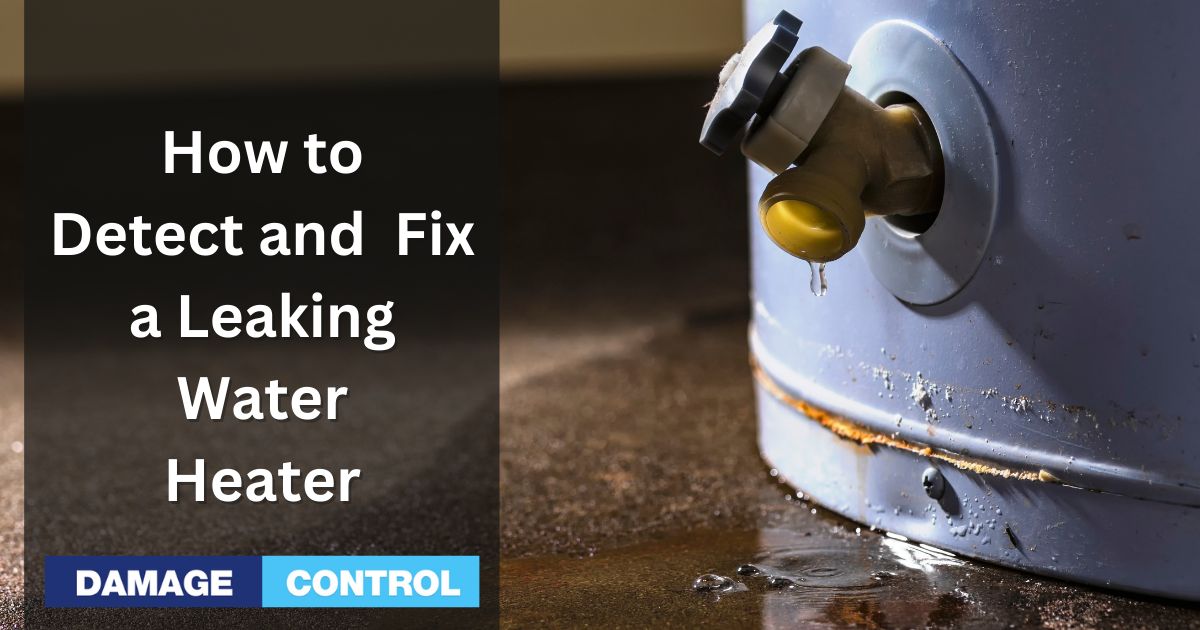The water heater is arguably the unsung hero of any home. It enables hot showers, clean dishes, clean clothes, and hot water that you did not have to put on a stove top to get. The water heater does a lot of heavy lifting in any home, which is why when it breaks down it can bring the activities of an entire household to a standstill. One of the biggest indicators that you are going to have problems with your water heater is when there is a leak.
Sometimes a leak is just a leak, a minor problem that can be dealt with quickly. Other times it is an indicator of worse problems ahead. A leaky water heater should always be treated as a serious matter. Here we will go over how to detect a leak on or in your water heater, what causes a leak, and what you can do to fix the problem. Let's dive in.
Common Causes of a Leaky Water Heater
Corroded Tank
A water heater is made of metal. The sad truth is that as sturdy as a water heater may be, it is susceptible to eventual corrosion, just like many other metal products. Over time, due to exposure to water paired with general wear and tear, your water heater's tank may start to corrode. This is due to a buildup of mineral content such as calcium and magnesium.
Loose Connections
When you have your water heater installed it must be installed correctly, preferably by a professional who does such installments regularly. If you did the installation yourself, but are seeing a leak, then you may want to double-check your connections because there is a chance you did not tighten them properly. Not tightening your connections means that there is a chance for water to leak out from the connection points.
Overheating
The entire purpose of a water heater is to heat up water. However, under the wrong circumstances, sometimes a water heater can heat up past an acceptable point, causing the water to turn to steam. When that happens there can also be a condensation build-up. This can be caused by numerous problems, such as sediment build-up or a faulty thermostat. Not only is an overheating water heater a safety hazard, but it can also cause some serious leaks.
Faulty T&P Valve
The T&P valve is arguably the most important fixture on a water heater because it relieves both temperature and pressure. This prevents your water heater from heating up too much. However, if you have a faulty T&P valve, then you have a range of potential problems on your hands in the form of a water heater that is, at best, leaky, and at worst, outright dangerous.
How to Fix a Leaky Water Heater
Replacing the Water Heater Tank
The first thing you should do before you set out to make any major repairs, is check the warranty on your water heater. You would be surprised at just how many people spend a significant amount of money replacing their water heater when the likelihood is that their water heater is still covered by a warranty.
Unfortunately, if your water heater is no longer under warranty, then you will likely have to pay out of pocket to take care of it. As unfortunate as that may be, it needs to be done.
Tightening Loose Connections
If the problem is as simple as the connection points being too loose then you will be relieved to know that all you need to do is cut water access off to the water heater and tighten the loose connections. You do not want to over-tighten because that can create its own set of problems but tighten them just enough to handle the problem.
Checking and Adjusting the Temperature Settings
If you find that the water heater is running too hot then you need to check the temperature settings. Make necessary adjustments to the temperature to keep it from overheating. If you find that the water heater is still overheating, then you will likely need to call in an expert who can examine it, as you may have a faulty thermostat.
Replacing the T&P Valve
As with tightening the connections, you want to turn the water off to your water heater and turn off the heat before making any attempt at replacing the T&P valve. This is, once again, an opportunity for you to check the warranty on your water heater as it might qualify your heater for a full replacement. If not, then follow the directions for replacing the valve. If you do not feel comfortable doing this particular job then you can likely find a handyman who will do it for you.
Prevention
The good news is that you can likely prevent leaks from occurring in the first place. You simply need to know how.
Regular Maintenance
If you want to prevent leaks then the best thing you can do is regularly check your water heater for damage. Check the tightness of the connections. Check the consistency of the temperature. Flush the water heater every six months. Drain the tank and remove any sediment. Inspect the anode rod. Doing regular maintenance should prevent most problems, especially leaks.
Proper Installation
Getting off on the right foot is key if you want to prevent problems. When you install your water heater you need to make sure it is done right the first time. Read the instructions, and commit time and care to each step, no matter how small it may be. By taking the time to take each step right, you are already preventing many problems.
Conclusion
Your home's water heater is a cornerstone to the smooth running of your household. A leak may seem like a small problem, but it is almost always a harbinger of worse things to come. If you take leaks seriously, no matter where you locate them, you will always be grateful later.

